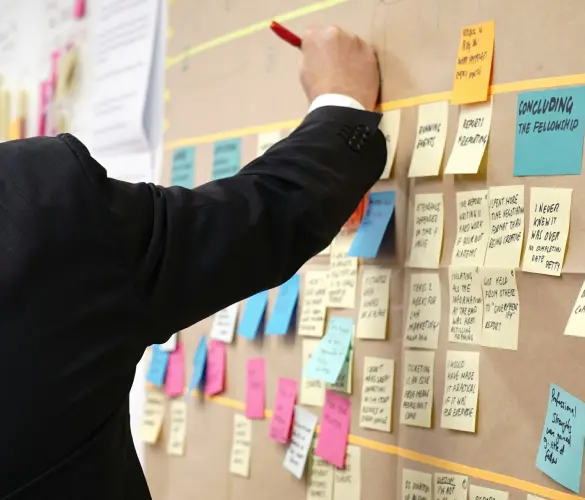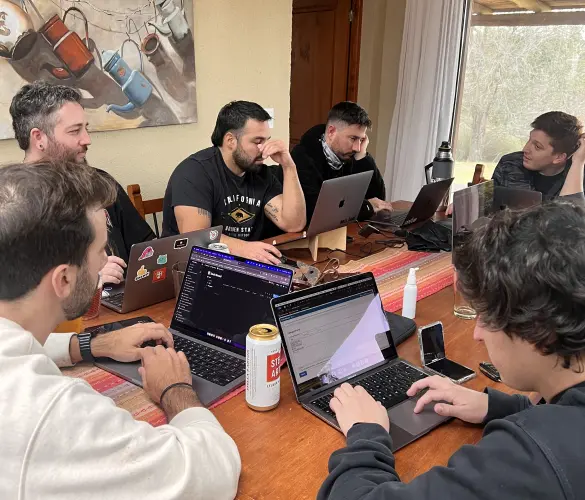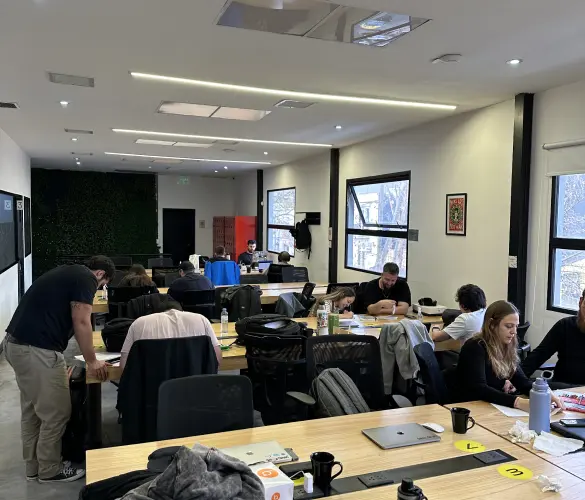- Blogs
- Behind the Canvas
- How to Lead and Develop Leaders in WordPress Agencies: a CTO’s Approach
Behind the Canvas / 6 min read
How to Lead and Develop Leaders in WordPress Agencies: a CTO’s Approach

Being a leader is about making decisions but also about empowering others to make decisions. As the CTO of a WordPress-focused web development company, I’ve learned, sometimes the hard way, that my old way of managing, where I decided everything by myself, affected both my mental health and the growth of team members.
Making all the decisions, from the name of a custom post type to the structure of a plugin, not only overloaded me but also prevented others from realizing their potential.
Over time, I have shifted to a culture of autonomy that has allowed my team to learn to make decisions and mistakes as an essential part of their development. Today, I have full confidence in their decisions and have seen a positive transformation in my team and myself.
This post summarizes the lessons I’ve learned as White Canvas’s CTO. I hope you will find them useful and apply them in your own leadership.
Foster a Culture of Autonomy
Fostering a culture of autonomy is crucial for leaders and team members to feel empowered to make decisions independently. This means allowing team members to make decisions that may lead to mistakes and accompanying them as they learn from these mistakes.
This experience strengthens independence and enhances their professional capability by learning which decisions are more effective toward their goals.
Learning to delegate and let go of control is a challenging process, especially if your leadership style has traditionally been highly centralized. But by allowing your team members to take responsibility and make decisions, you are facilitating their growth as leaders.
Assume a Mentoring Role
Mentoring means guiding emerging leaders without giving them all the answers from the start. My approach is to ask questions that make them reflect on their decisions so that they find the solutions themselves.
This approach improves their problem-solving skills and gives them the confidence to act independently.
Good mentoring not only helps leaders solve current problems but also gives them the tools to face future challenges independently, ultimately reinforcing the company’s culture of autonomy.
Balance Guidance and Autonomy
One of the biggest challenges when helping new leaders emerge is striking a balance between providing support and allowing independence. It is vital to know when to intervene and when to give them space to develop their own leadership skills.
The key for me is to avoid micromanaging but to be available when they need you to offer strategic guidance without taking total control. Over time, this balance helps leaders feel more confident and develop their own leadership style.
Identify Strengths and Weaknesses
One key role of a leader who trains other leaders is to identify each team member’s strengths and weaknesses. Not all leaders are the same, and recognizing their strengths and areas for improvement allows you to assign them to projects that will help them perform at their best.
Assigning projects suited to each leader’s capabilities enhances their growth. It ensures that they are working in areas where they can shine.
At the same time, working on their weaknesses in a constructive way allows them to become more well-rounded and versatile leaders.
Work on Overcoming the Anxiety of Delegating
Many leaders find delegating important responsibilities to be a source of anxiety, but it is essential to allow others to grow. At first, letting go of control can be difficult, but it is necessary for your team to achieve its potential.
One of the most important lessons I have learned is that trusting in the abilities of others and letting them make decisions on their own, even if they make mistakes along the way, has helped me free up time and energy and has strengthened my team’s ability to act independently and effectively.
Celebrate the Leaders’ Successes
Recognizing and celebrating leaders’ achievements is key to keeping them motivated. This reinforces confidence in their decision-making ability and strengthens their commitment.
It is important that every achievement, no matter how small, is celebrated as a step toward growth.
The Value of Feedback
Giving feedback is essential to the growth of leaders, but the way it is delivered can make a big difference. Instead of imposing corrections with phrases like “this has to be this way,” I’ve learned that it’s more effective to say “I would have done it this way.”
This opens up dialogue and makes leaders more receptive to suggestions rather than feeling fundamentally criticized for their approach.
Good communication in this regard helps people take an interest in improving and not feel that feedback is an imposition.
Additionally, it is crucial to make corrections privately and congratulations publicly. This reinforces leaders’ confidence and allows them to grow without feeling like their growing pains are being exposed to others.
Resist the Pressure to Respond Immediately When You Don’t Know the Answer
Many leaders feel the pressure to know all the answers and provide quick solutions, whether in internal meetings or with customers. This need to respond immediately can lead to hasty decisions that are not always the best ones.
It is critical to understand that an answer is not always necessary on the spot. Saying, “Good point. I’ll think about it and get back to you with options,” for example, can radically change the quality of the final solution.
Taking time to reflect, evaluate the pros and cons, and consider different paths before making a decision can substantially improve decision-making. As leaders, it is key to allow ourselves that space to think and not feel that we must always have an immediate answer.
The Challenges of Leading Are Not Linear
Everything I have outlined here may seem clear in theory, but it is much more difficult to achieve in practice. It’s not a linear or straightforward process, and to this day, I still face challenges in applying what I know is important.
As someone who started as a junior developer and grew to CTO in the web development world, I can say that the biggest challenge is not just mastering the technical skills but also developing the soft skills that involve leading others.
This particular path has been one of the biggest challenges of my career and continues to be a daily challenge beyond the technical issues I face.
A Path of Continuous Learning
In my experience as a CTO of a WordPress development agency, leading team members to become leaders of their own is a never-ending process.
Every day, I learn new ways to guide my team, foster their passion for what we do, and help them find their own path. Leadership is not static, and there will always be new lessons to learn and new ways to grow, both for me and the leaders I am helping grow.
Another thing to remember is that the journey to develop autonomous leaders has no final destination. There will always be areas to improve, new strategies to try, and skills to develop. Most importantly, as a leader, never stop learning and looking for ways to support the growth and development of your team.
If you found this post useful, read our blog and developer resources for more insights and guides!
Related Articles

Business / 12 min read
Business / 12 min read
How to Take on More WordPress Development Projects While Maintaining Quality
As a digital agency that provides WordPress services, your job is to take on as many projects as possible while maintaining the highest quality. This is easier said than done…
Read More
Business / 9 min read
Business / 9 min read
How to Choose a WordPress Development Agency to Scale Your Projects?
When your agency starts to scale, you may decide that a big part of your expansion will be providing WordPress services. If that's the case but you don't have an…
Read More
Business / 7 min read
Business / 7 min read
How to Optimize Time and Resources in WordPress Projects
WordPress agencies need to optimize and human resources use in order for their services (development, QA, design, etc.) to be profitable. They need to plan these projects very thoroughly to…
Read More
Business / 11 min read
Business / 11 min read
How WordPress Outsourcing Can Help Scale Your Agency
WordPress development outsourcing is becoming more frequent and affordable every day, helping global digital agencies of all sizes scale their services without the long-term investment of hiring an in-house team.…
Read More
Business / 8 min read
Business / 8 min read
What Is a White Label WordPress Development Agency?
A white label WordPress development agency is a company of WordPress developers, QA analysts, and project managers who provide outsourced services to digital agencies that lack a development team. Importantly,…
Read More